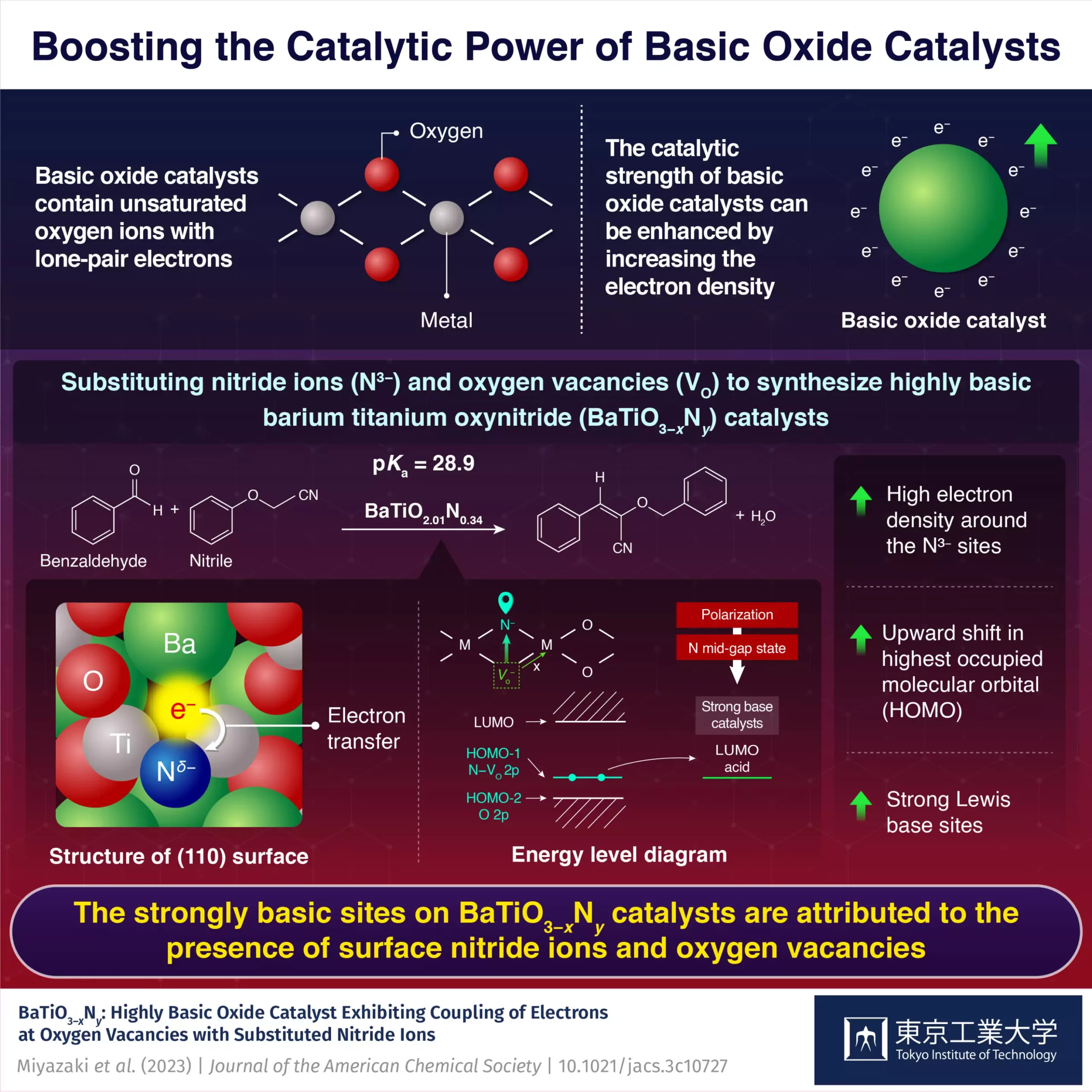Catalysts play a crucial role in chemical reactions by speeding up the reaction rate. Basic oxide catalysts, in particular, have been widely used in the synthesis of chemicals, pharmaceuticals, and petrochemicals. Efforts to enhance the catalytic power of these catalysts have been ongoing, with researchers exploring various strategies such as doping and substitution. In a recent study conducted by a team of researchers from Tokyo Institute of Technology, a new hexagonal BaTiO3-xNy oxynitride catalyst with exceptional basicity was developed, opening up new possibilities in catalyst development.
The researchers focused on substituting nitride ions and oxygen vacancies into face-sharing Ti2O9 dimer sites in BaTiO3-x, resulting in the development of the hexagonal BaTiO3-xNy oxynitride catalyst. This substitution of oxygen ions with nitride ions introduced changes in the electronic structure of the catalyst, specifically shifting the energy level of the highest occupied molecular orbitals (HOMO) upward. The upward shift in the HOMO energy level enabled a more favorable environment for electron donation to a reactant’s lowest unoccupied molecular orbital (LUMO). Additionally, the introduction of oxygen vacancies alongside the doped nitride ions further increased the electron density, raising the HOMO energy level and ultimately leading to a catalyst with exceptional basicity.
The developed oxynitride catalyst exhibited impressive basicity, surpassing materials like BaTaO2N and LaTiO2N that did not contain oxygen vacancies. The coupling of substituted nitride ions to electrons at oxygen vacancies played a vital role in enhancing the basicity of the catalyst. This improved basicity facilitated Knoevenagel condensation reactions, where the catalyst accepted protons from highly basic nitrile reactants, resulting in the formation of C-C bonds between carbonyl and methylene groups. The oxynitride catalyst, with a pKa value as high as 23.8 and 28.9, possessed a basic strength comparable to that of superbases.
Aside from its superior basicity, the oxynitride catalyst displayed remarkable stability. It underwent no structural or electronic state changes after the reaction, making it an excellent candidate for practical applications. Moreover, the catalyst maintained its catalytic activity even after repeated use, highlighting its potential for long-term and continuous use in various chemical processes.
The method presented in this study to enhance basicity paves the way for the development of highly basic catalysts for a wide range of chemical processes. The synthesis of more highly basic catalysts will require the combination of surface anion species and vacancies. With further research and exploration, it is possible to unlock the full potential of basic oxide catalysts, opening up new horizons in chemical synthesis and catalysis.
The development of the hexagonal BaTiO3-xNy oxynitride catalyst with exceptional basicity is a significant breakthrough in catalyst development. By substituting nitride ions and introducing oxygen vacancies, the researchers achieved a catalyst with a higher tendency to donate electrons, resulting in superior basicity. Its stability and reusability further demonstrate its potential for practical applications. This study provides a solid foundation for the synthesis of highly basic catalysts, promising advancements in the field of chemical processes and catalysis. With continued research and development, the possibilities for catalyst design and optimization are endless.



Leave a Reply